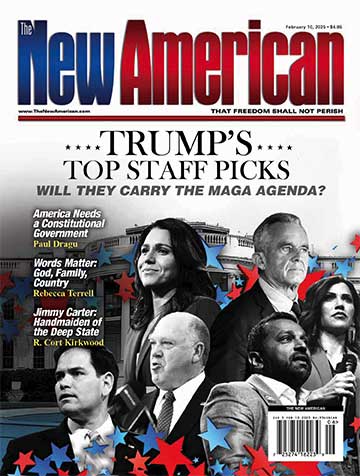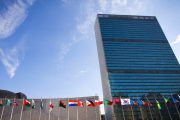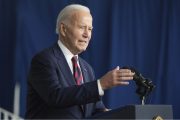
On Tuesday, July 23, Japan officially became the 12th nation to join the Trans-Pacific Partnership (TPP). Japan is the second-largest economy to tie its trade policy to the terms of the super-secret multinational agreement.
With the entry of Japan, the TPP now covers “nearly 40 percent of the global economy.”
The announcement of Japan’s participation in the U.S.-led TPP negotiations couldn’t have come at a worse time for America’s domestic auto industry, however.
As The New American reported earlier this week, the city of Detroit filed for Chapter 9 municipal bankruptcy. The car companies that call the Motor City home were quick to denounce the federal government’s entry into any trade agreement with their decades-long competitor, Japan.
In an article published on Tuesday by the Wall Street Journal, autoworkers’ worries were summarized:
Some 80,000 auto workers from Chrysler Group LLC, Ford Motor Co. and General Motors Co. signed a petition criticizing Japan for what they called its “closed” market for cars, according to the American Automotive Policy Council, an alliance to promote international trade and economic policies.
Rep. Sandy Levin, the ranking member of the House Ways and Means Committee, said in a speech Tuesday that any elimination of tariffs on car imports into the U.S. should be tied immediately to the “opening of the Japanese auto market.” An immediate connection between U.S. duties and access to the Japan car market is better than a phased tariff elimination envisioned in the TPP, he said.
Mr. Levin also backed ensuring that trade agreements include a means of taking action against countries that manipulate their exchange rates.
In the petition published by the American Automotive Policy Council, the representatives for the autoworkers spell out their opposition to Japan’s decision to join the TPP negotiations.
“Through petitions, that will begin arriving today, tens of thousands of hourly and salaried employees at Chrysler, Ford and General Motors urged Congress to strongly oppose completing the Trans-Pacific Partnership (TPP) with Japan at this time unless currency disciplines and non-tariff barriers are addressed,” the statement reads.
Currency manipulation is at the heart of the car companies’ concerns. As described by the International Business Times:
Japan is accused of manipulating its currency at the behest of its top automakers, including the world’s largest by sales volume, Toyota Motor Corporation (TYO:7203). Lowering the value of a currency makes a country’s locally made goods more competitive internationally. About 94 percent of all cars sold in Japan are made in Japan, according to Rep. Sander Levin (D-Mich.) of the House Ways and Means Committee, who said Wednesday the U.S. would have to phase out its import tariffs of 2.5 percent for cars and 25 percent for trucks in order to compel Japan to open up its auto market.
What of the relative economic might of the countries currently included within the TPP? How alike are the countries? One means of comparison shows an otherwise uncrossable chasm between several of the TPP member states.
Below are the gross domestic products (GDP) and world rankings for 2011 as reported by the International Monetary Fund of the 11 countries currently participating in the TPP:
• The United States ranks first with a GDP of over $15 trillion.
• Japan is next with a GDP of $5.867 trillion. That ranks third worldwide, behind the U.S. and China.
• Canada ranks 11th with a GDP of about $1.7 trillion.
• Australia ranks 12th with a GDP of about $1.5 trillion.
• Mexico ranks 14th with a GDP of almost $1.2 trillion.
• Malaysia ranks 36th with a GDP of nearly $288 billion.
• Singapore ranks 38th with a GDP of about $260 billion.
• Chile ranks 39th with a GDP of about $248 billion.
• Peru ranks 51st with a GDP of about $177 billion.
• New Zealand ranks 55th with a GDP of almost $159 billion.
• Vietnam ranks 57th with a GDP of nearly $123 billion.
• Brunei ranks 111th with a GDP of $16 billion.
Math doesn’t lie: The total GDP of the 10 TPP countries other than Japan equal roughly one-third of that of the United States. The relevant question is whether partnership with these countries will result in a strengthening of their economies or a weakening of our own.
Admittedly, a country’s GDP is only one of many relevant metrics that could be used to compare relative global economic position. The irrefutable fact is, however, that when looking at just that, it is evident that the Obama administration is somehow willing to tie the economic prosperity of the United States to much weaker countries.
Beyond the economic disparity of the TPP, there is the damage to American sovereignty that will accompany acceptance of the TPP. The biggest step toward globalization and a severing of any political control by the elected representatives of the American people over the establishment of trade policy will come from the achievement of the ultimate aim of the TPP: creation of a Free Trade Area of the Asia-Pacific (FTAAP).
An article written in the Georgetown Journal of International Law says that the TPP negotiations “are designed to culminate in a ‘gold standard’” free trade agreement (FTA). The article continues:
The TPP negotiations are among the more recent of a large number of FTAs and Regional Trade Agreements (RTAs) that have been or are being negotiated between the member economies of the Asia-Pacific Economic Cooperation (APEC) forum. Since the APEC Leaders’ Bogor Declaration in November 1994, the member economies have been committed on some level to the objective of achieving an environment for “free and open” trade and investment in the Asia-Pacific region.
In the argot of globalism, “free and open trade” translates as “economic and political integration.” Later in the Georgetown piece, former U.S. Trade Representative (USTR) Ron Kirk is quoted as calling for the TPP to be “more than a broad concept.”
Additional evidence of the “ambitious” goal of the TPP discussions is found in a press release issued by representatives of the member nations attending an Asia-Pacific Economic Cooperation (APEC) meeting in Honolulu in 2011:
We are delighted to have achieved this milestone in our common vision to establish a comprehensive, next-generation regional agreement that liberalizes trade and investment and addresses new and traditional trade issues and 21st-century challenges. We are confident that this agreement will be a model for ambition for other free trade agreements in the future.
The USTR’s TPP website declares, “The TPP is the most credible pathway to broader Asia-Pacific regional economic integration.”
Likely, the majority of these changes will come in the form of the surrendering by Congress of the right to set trade policy to an unelected FTAAP board of directors, led, of course, by representatives of the other member states, including those with lesser economic strength and those ruled by communist regimes.
“On the economic side, expanding the geographic area of a free trade zone effectively dilutes remaining protection for domestic industries and is thus strongly resisted. On the political side, the rules of origin, different in each agreement, are meant to restrain competition and to provide side payments to domestic companies,” and article by the Peterson Institute explains.
How will the links of this “trade” chain be forged? According to the Peterson piece, “the pathway to an FTAAP will follow a hybrid approach that links elements of the TPP and intra-Asian approaches to trade integration.”
Integration is a word that is painful to the ears of constitutionalists and those unwilling to surrender U.S. sovereignty to a committee of globalists who are unelected by the American people and unaccountable to them. Integration is an internationalist tool for subordinating American law to the globalist bureaucracy at the United Nations.
Economic and political integration will push the once-independent United States of America into yet another collectivist bloc that will facilitate the complete dissolution of our nation and our states into no more than impotent members of a one-world government.
The latest round of TPP negotiations was carried on under a shroud of secrecy at Kota Kinabalu, Malaysia, and wrapped up Wednesday, July 24.
Although the hour is late, there remains time for Americans interested in maintaining sovereignty over U.S. trade, manufacturing, Internet access, and copyright laws to contact their senators and encourage them to refuse to ratify the Trans-Pacific Partnership.
Joe A. Wolverton, II, J.D. is a correspondent for The New American and travels frequently nationwide speaking on topics of nullification, the NDAA, and the surveillance state. He can be reached at [email protected].



